Rural Scotland Business Panel survey: report
This report presents findings from the first Rural Scotland Business Panel survey carried out in October/November 2021.
7. Markets
Key findings
Just under three quarters (72%) of businesses were importers, sourcing goods or materials from markets outside of Scotland. The largest market was England and Wales (67%) followed by the EU (34%), outside the EU (20%) and Northern Ireland (18%).
Businesses in the Highlands and Islands and the South of Scotland were more likely than those in the rest of rural Scotland to source goods and services from their local area, from Scotland and from England and Wales.
The majority (97%) of businesses sold goods or services within Scotland, with half selling only in Scotland and half exporting outside of Scotland.
Highlands and Islands businesses were more likely to sell to the EU (25%) and outside the EU (22%), while South of Scotland businesses were more likely to sell to England and Wales (57%).
Thinking about the 12 months ahead, there was a sense of cautious optimism about future sales. Businesses generally expected either stability or an increase in sales to the markets they operated in.
Import markets
Just under three quarters (72%) of businesses were importers, meaning they were sourcing goods or materials from markets outside of Scotland. The largest market was England and Wales (67%) followed by the EU (34%), outside the EU (20%) and Northern Ireland (18%) (Figure 7.1).
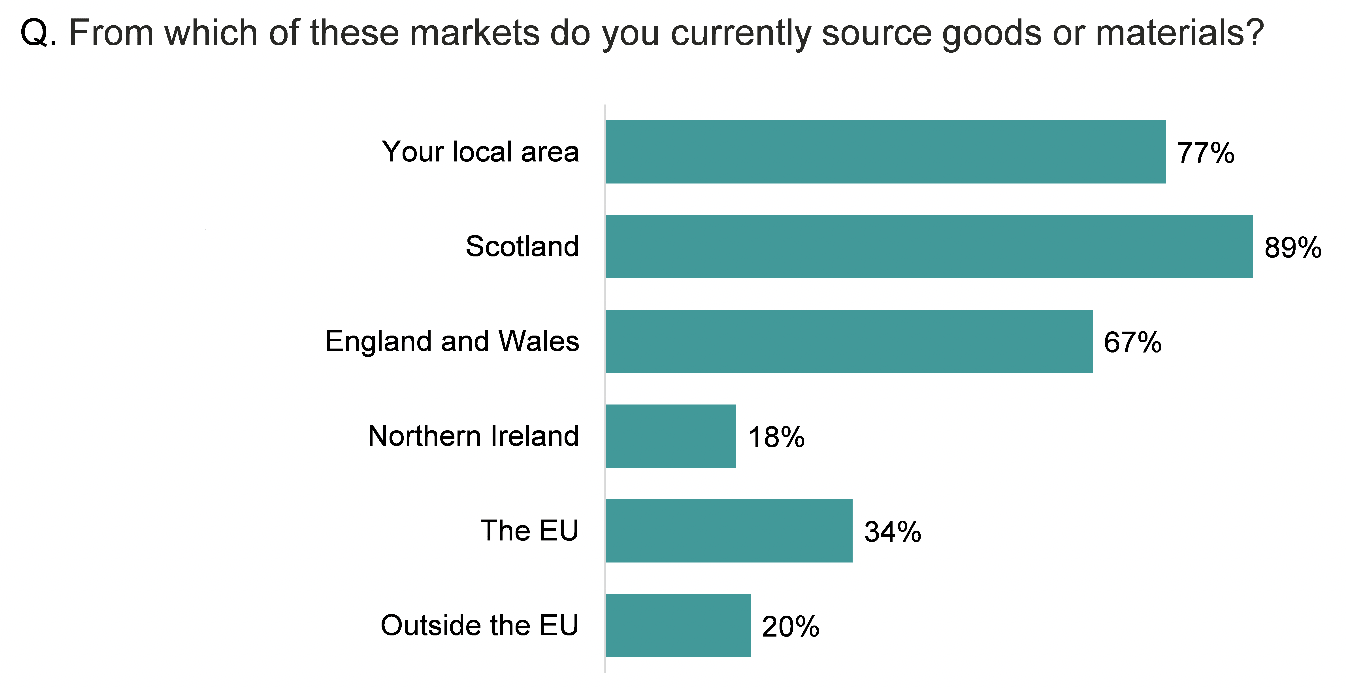
Base: All buisinesses (2,726)
Variation in import markets
Businesses in the Highlands and Islands and the South of Scotland were more likely than those in the rest of rural Scotland to source goods and services from their local area, from Scotland and from England and Wales. (Figure 7.2).
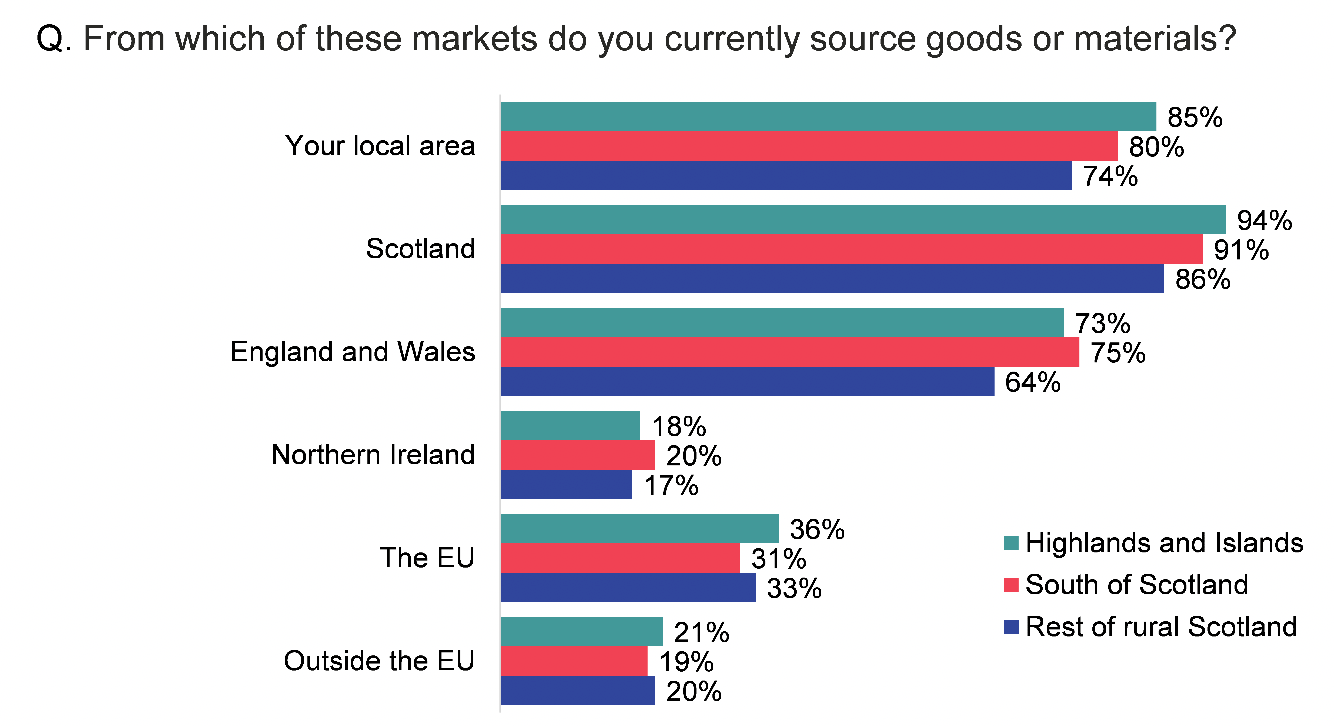
Base: All buisinesses (2,726)
Aside from regional variation, businesses more likely than average to source from particular markets were:
- food and drink – from the local area (91%) and England and Wales (70%),
- tourism – from the local area (93%),
- large businesses (25+ staff) - local area (86%), England and Wales (79%), the EU (59%) and outside the EU (29%),
- remote rural businesses - local area (84%), and
- businesses striving for growth - England and Wales (75%), Northern Ireland (21%), the EU (41%) and outside the EU (26%).
Export markets
The majority (97%) of businesses sold goods or services within Scotland, with half (50%) selling only in Scotland and the other half (49%) selling goods or providing services to markets outside of Scotland. The top export market was England and Wales (45%), followed by Northern Ireland (22%), the EU (20%) and outside the EU (19%) (Figure 7.3).
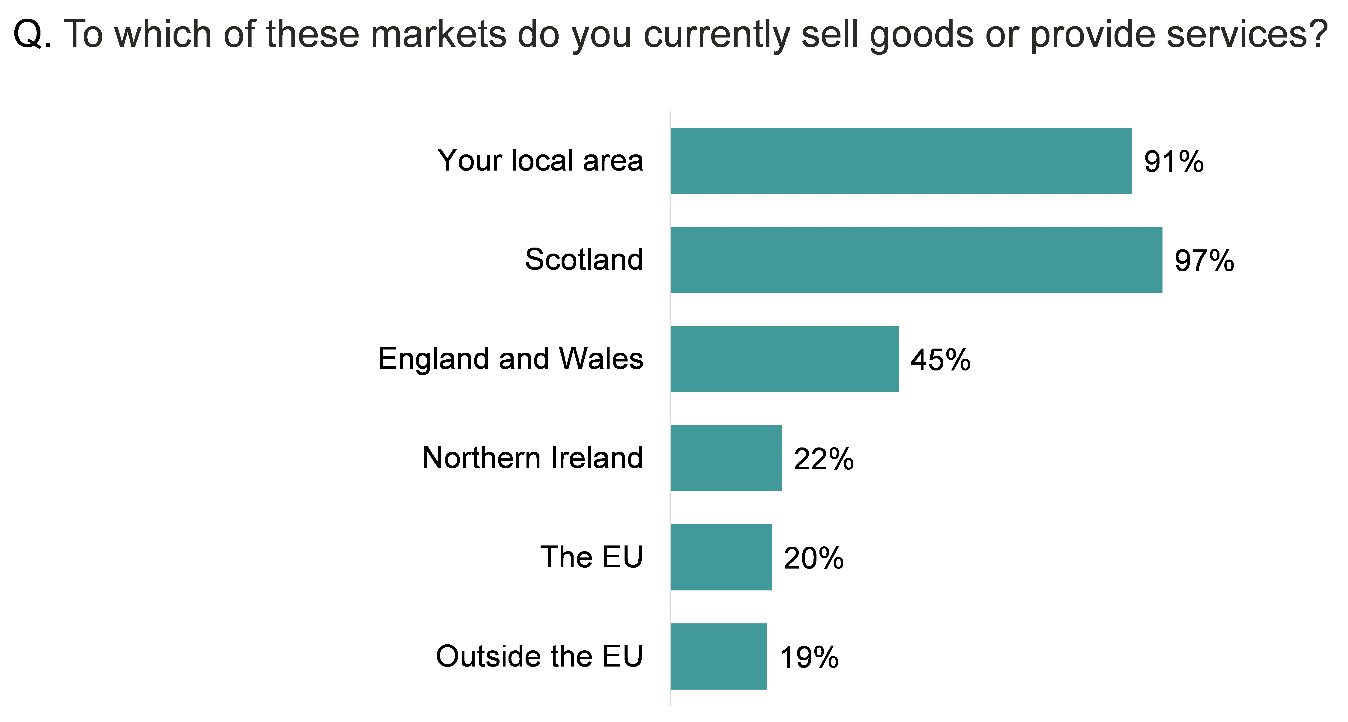
Base: All buisinesses (2,726)
Variation in export markets
Highlands and Islands businesses were more likely than average to sell to the EU (25%) and outside the EU (22%), while South of Scotland businesses were more likely to sell to England and Wales (57%) (Figure 7.4).
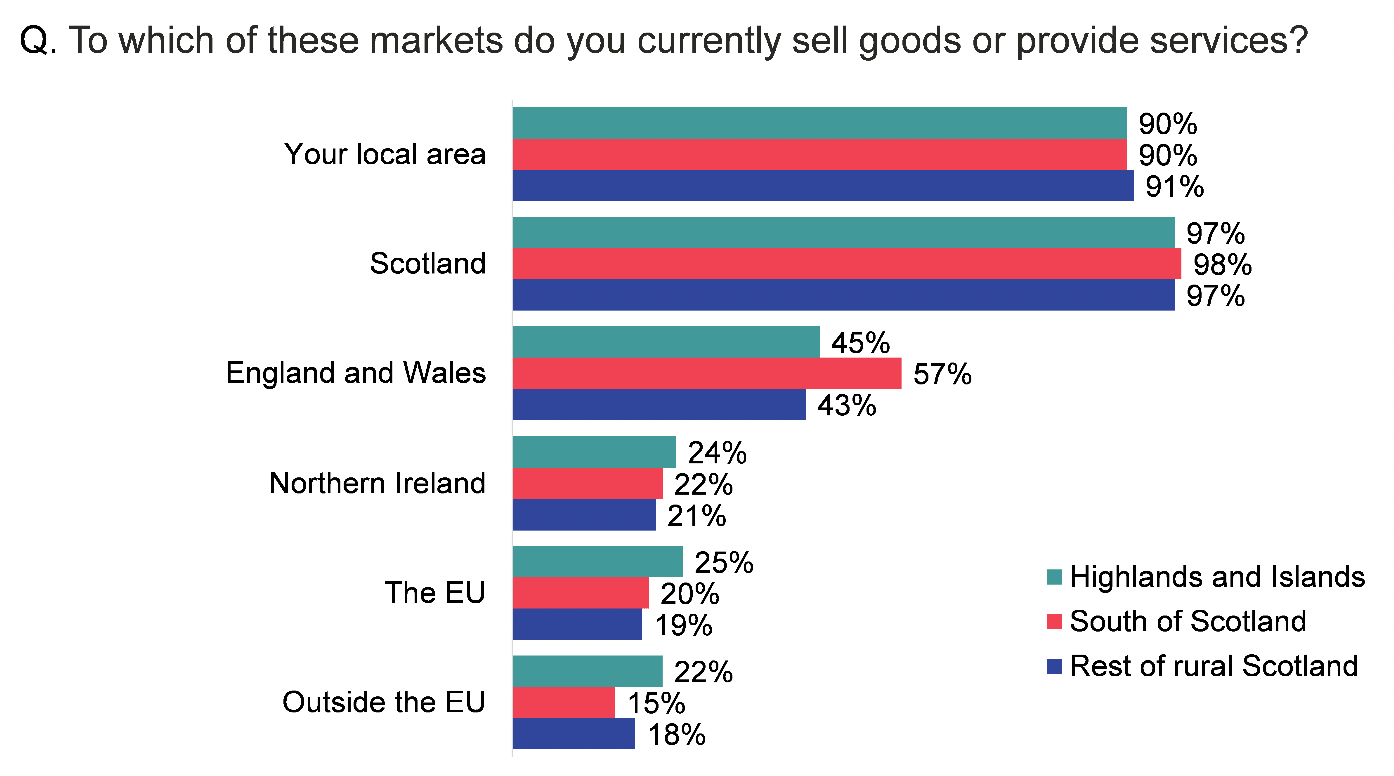
Base: All buisinesses (2,726)
Certain growth sectors showed higher than average levels of trading with markets outside of Scotland:
- tourism - England and Wales (60%), Northern Ireland (53%), the EU (47%) and outside the EU (43%)
- creative industries - England and Wales (59%), Northern Ireland (32%), the EU (31%) and outside the EU (36%), and
- financial and business services: England and Wales (53%), and outside the EU (24%).
There was further variation among:
- large businesses (25+) - England and Wales (59%), Northern Ireland (33%), the EU (32%) and outside the EU (29%)
- remote rural - England and Wales (49%), Northern Ireland (25%), the EU (24%) and outside the EU (21%), and
- businesses striving for growth - England and Wales (54%), Northern Ireland (29%), the EU (27%) and outside the EU (25%).
Outlook for export markets
Thinking about the 12 months ahead, there was a sense of cautious optimism about future sales. Businesses generally expected either stability or an increase in sales to the markets they operated in.
Half of businesses expected sales in Scotland and England and Wales to remain fairly static (50% and 53% respectively) while around a third expected them to increase (37% and 32%). Businesses selling to Northern Ireland generally expected stability (63%), although 21% expected an increase and 9% a decrease.
Businesses selling to the EU and outside the EU also generally expected stability (48% and 47% respectively), while 28% expected sales to increase to the EU and 34% to outside the EU. (Figure 7.5).
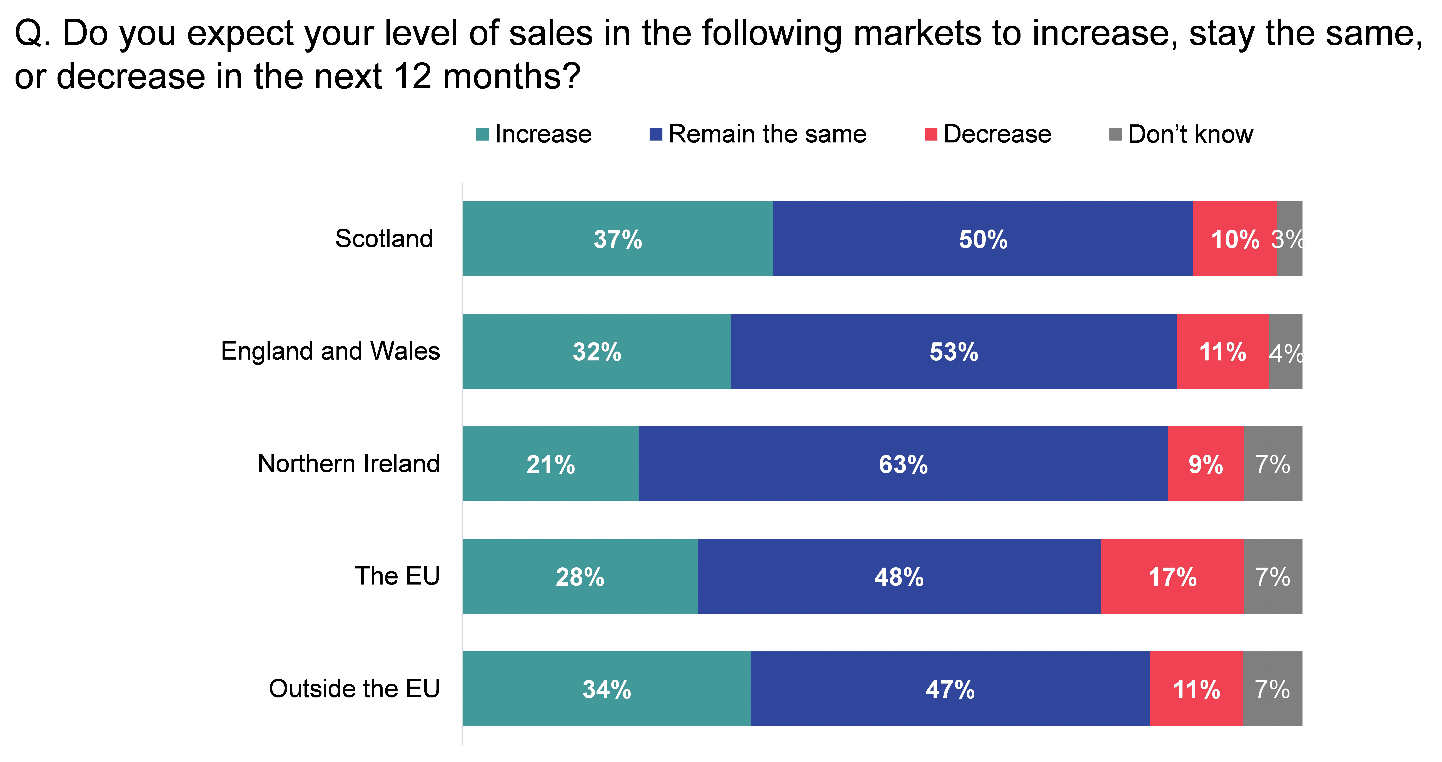
Variation in outlook
- Tourism businesses were more likely to expect sales to increase in England and Wales (42%), Northern Ireland (28%), the EU (46%) and outside the EU (45%).
- Food and drink business expected sales to remain stable in Scotland (64%) and in England and Wales (63%).
- Remote rural businesses expected sales to remain stable in Scotland (56%).
Contact
Email: socialresearch@gov.scot
There is a problem
Thanks for your feedback